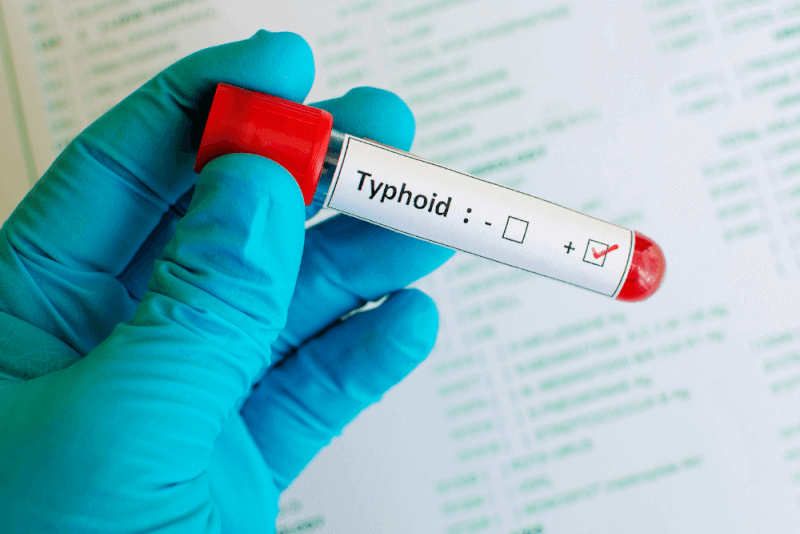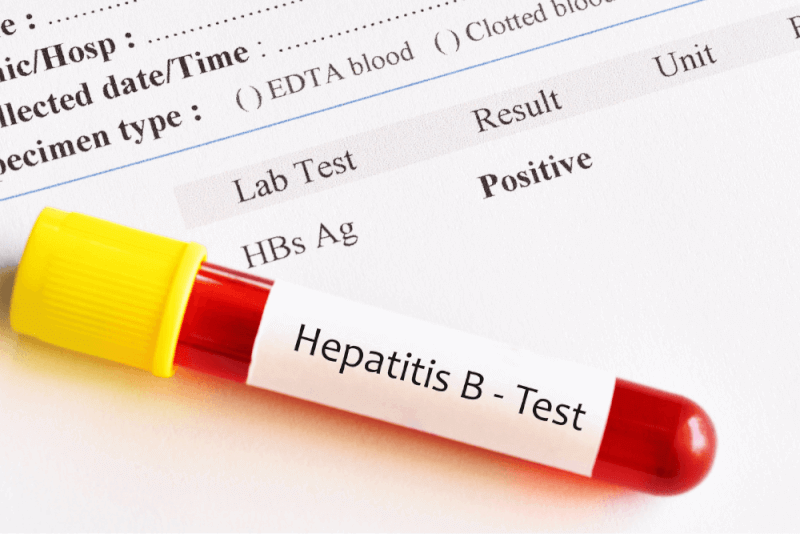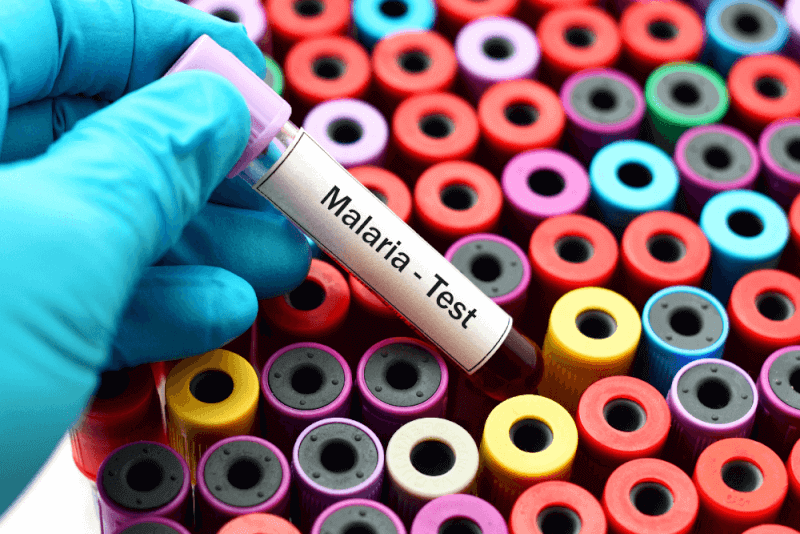What is Typhoid Fever?
Salmonella Typhi bacterium infecting the small intestine causes typhoid fever, also known as enteric fever. Paratyphoid fever, caused by Salmonella Paratyphi, is often mentioned alongside typhoid. While both bacteria belong to the same family, they are different from Salmonella bacteria that cause food poisoning.
Causes of Typhoid
Typhoid is typically caused by a bacterium known as Salmonella enterica serotype typhi and often leads to outbreaks. It can spread from person to person and from surfaces to people.
Typhoid fever affects millions of people worldwide each year, most commonly in Africa and South Asia. Travelers to these regions can spread the disease globally.
Factors increasing the risk of contracting typhoid include:
- Visiting or working in regions where typhoid is common
- Working as a clinical microbiologist handling Salmonella enterica serotype typhi
- Close contact with people who have or have had typhoid fever
Symptoms of Typhoid
Typhoid fever gets its name from the prolonged fever it causes. If untreated, typhoid can worsen quickly with high fever. Symptoms of typhoid include:
Symptoms may not appear for 1-3 weeks after exposure. Early symptoms include:
- Fever that starts low in the morning but rises throughout the day
- Chills
- Headache
- Weakness
- Fatigue
- Muscle aches
- Abdominal pain
- Diarrhea or constipation
- Rash
Other symptoms can include cough, loss of appetite, and sweating. As the disease progresses, the bacteria cause various problems in the intestines, leading to symptoms such as:
- Abdominal pain
- Severe bloating
- Sepsis due to bacteria spreading from the intestines
Severe symptoms indicating life-threatening conditions include:
- Confusion
- Inattention to surroundings
- Lack of response to surroundings
These symptoms also indicate a life-threatening condition. In some patients, fever may recur a few weeks after it subsides.
Transmission of Typhoid
Typhoid is typically transmitted through food and water contaminated with Salmonella typhi. It can also spread when people with typhoid touch food or drinks without washing their hands.
Drinking water, consuming food, or using water contaminated with feces are common ways typhoid fever spreads.
Not washing hands after using the toilet can spread the bacteria to surfaces, which can then infect healthy people.
Diagnosis of Typhoid
Before diagnosing typhoid, information about symptoms and travel history is needed. If typhoid is suspected, a culture test using samples from various body fluids or tissues is conducted. Blood, stool, urine, and bone marrow are used in the test. Samples are placed in an environment that promotes rapid bacterial growth.
Growth is monitored under a microscope. Culture testing is the most common method for diagnosing typhoid fever, but other tests may also be conducted to confirm the diagnosis. These tests include detecting antibodies against typhoid bacteria and checking for typhoid DNA in the blood.
Treatment Methods for Typhoid
Antibiotic treatment is the only effective treatment for typhoid fever. The prescribed antibiotics depend on the source of the bacteria, as different sources respond differently to antibiotics. Antibiotics prescribed for typhoid treatment include:
Fluoroquinolones
Including ciprofloxacin, this antibiotic group is the first choice in treatment. Some bacteria resistant to this antibiotic group, known as antibiotic-resistant bacteria, exist.
Cephalosporins
This antibiotic group prevents bacteria from forming cell walls and is used for patients with antibiotic resistance.
Macrolides
This group of antibiotics prevents bacteria from producing proteins. If a patient has antibiotic resistance, azithromycin is prescribed.
Carbapenems
This group of antibiotics prevents bacteria from forming cell walls but focuses on a different stage than cephalosporins. This group is used for serious cases unresponsive to other treatments.
Typhoid Vaccine
Two types of vaccines have been developed against typhoid. However, both require booster doses to maintain effectiveness. These vaccines do not entirely eliminate the risk of contracting typhoid but significantly reduce it. Although untested, they may also provide some protection against paratyphoid fever.
Oral Vaccine
Oral typhoid vaccines are four pills taken every other day.
Injectable Vaccine
Injectable vaccines against typhoid are administered in a single dose. They should be given at least two weeks before traveling to regions where typhoid is common. The vaccine is not suitable for children under two years old. To maintain protection, booster doses should be administered every two years.
Complications of Typhoid Fever
Complications from typhoid fever usually involve bleeding and damage in the intestines. The bacteria can cause the death of cells in the walls of both the small and large intestines, leading to intestinal contents leaking into the abdominal cavity, causing severe abdominal pain and vomiting, and resulting in sepsis.
Other diseases that typhoid fever can cause include:
- Myocarditis (inflammation of the heart muscle)
- Lung inflammation
- Endocarditis
- Pancreatitis
- Mycotic aneurysm
- Kidney or bladder inflammation
- Delirium
- Hallucinations
- Paranoid psychosis
- Infection of the membranes and fluid surrounding the brain and spinal cord
Preventing Typhoid
Vaccination is the first step in preventing typhoid. However, since the vaccine does not provide complete protection, attention should be paid to the following:
- Handwashing
- Avoiding untreated water
- Not consuming raw vegetables and fruits
- Preferring hot foods
To prevent the spread of typhoid fever to others, the following should be observed:
- Regular use of antibiotics
- Frequent handwashing
- Avoiding handling food








